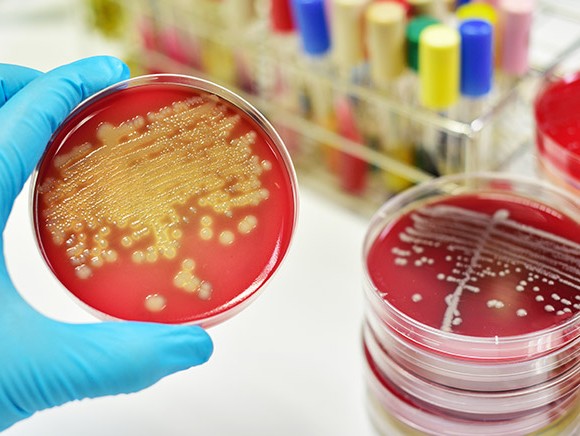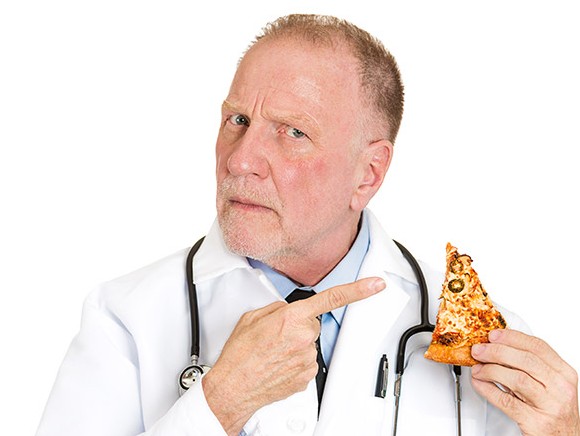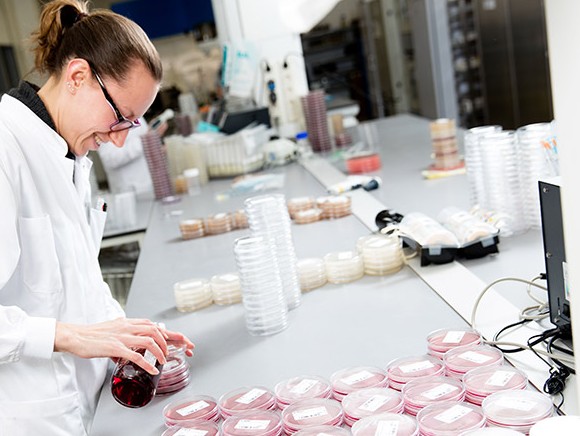
Safeguarding food safety remains high on social and political agendas. The maximum penalties that can be imposed on fraudulent food companies have been raised considerably and the Netherlands Food and Consumer Product Safety Authority (NVWA) is conducting more stringent checks of whether companies are sticking to the rules. And yet the number of recalls is increasing, despite BRC, HACCP, GlobalGAP, IFS, etc. The danger often lurks unexpectedly.
“Food safety at risk due to crisis at NVWA” screamed the headline on Dutch news website Nu.nl earlier this summer. But shouldn’t ensuring food safety primarily be a responsibility of the industry itself? Politicians seem to think so, at least.
The NVWA has indeed been involved in over a decade of cutbacks, mergers and restructuring, which has had an impact on the quality of its inspection and monitoring activities. In December 2013 an improvement plan was introduced to structurally improve the monitoring of the country’s food industry, but that has not yet produced the desired results. On 9 June, the Dutch lower house of parliament held an extensive ‘General Consultation’ about the NVWA, during which State Secretary Van Dam emphasised: “The industry must ensure that the food it produces and sells is safe.” The monitoring, he claims, “is aimed at forcing companies to comply by identifying potential offenders and offences as effectively as possible. Therefore, the monitoring must become smarter and more targeted to increase the chance of also catching those in breach of the rules.” Of course, far from all recalls are caused by companies who purposefully break the law. Instead, they are often due to unintentional mistakes, sloppiness and a lack of knowledge.
“Specialist knowledge on the factory floor is an important aspect in keeping food processing companies out of food safety trouble,” says IJsbrand Velzeboer from Scienta Nova. “It’s becoming increasingly relevant for companies to shape the development of that knowledge internally as a result of a relatively high proportion of older employees leaving and taking indispensable expertise with them. A failing skills policy can have major consequences: product liability claims, high recall costs and damaged reputations.”
Many companies underestimate the product liability, according to IJsbrand. “Following the Foppen salmon affair in 2012, personal injury lawyers have become a lot more aware of this new revenue model. Most recalls can often be traced back to clumsy production errors that have occurred on the factory floor. And many recalls are caused by incorrect labelling of allergens or by errors in the product formulation.”
Scienta Nova is regularly approached by insurance companies asking how to estimate the risks of a recall for a specific food processing company. “My standard answer to this is that the risks are simply huge nowadays,” says IJsbrand, “and that it would be madness to include recall coverage in the insurance policy. In the Netherlands, recalls occur so frequently that from an insurance perspective the risks can best be compared to those associated with natural disasters and terrorist attacks – both of which can never be insured against, and rightly so.” He makes a quick calculation of what a recall costs: “For an average food processing company or wholesaler, the basic starting rate is around 250,000 euros. And if we factor in the potential ‘extra costs’ – in other words the penalties that the retailers impose on the manufacturer – then we’re soon talking about a million or more.”
If a supermarket chain initiates a recall it sets off a complex chain of events, as he explains: “NVWA isn’t always informed; it’s not compulsory in all cases. The fact is that the retailer forces the manufacturer to recall the products, whether they agree with the decision or not. That’s how it happens: it’s stated in part ‘X’, section ‘Y’ and clause ‘Z’ in the retailer’s purchasing agreement. There are various court cases in progress in which manufacturers are appealing against such action by supermarkets, and in particular the associated costs. And then the manufacturer discovers that the small print of his insurance policy has been changed to state that it only pays out when the recall has been instigated by the NVWA.” IJsbrand lists a number of crucial points that affect the likelihood of a recall. “Think of the level of training, the language proficiency and attitude of the employees who are in direct contact with the product. There needs to be a good training plan for the workforce, not forgetting newcomers. The presence of an integrity statute with proven effectiveness reduces the chance of a recall, as does a tidy and well-ordered storage area for raw materials. The general state of repair of the premises, the equipment and above all the state of the sanitary areas are also good indicators.”
Although the ‘general state’ can look fine at first glance, the biggest problems are often hiding in the smallest of places. Floors, gutters and drains, for example, are often way down on the list of priorities. “But they should be an important focus of attention in food processing companies. The figures don’t lie,” says Theo van der Koore, Sales Manager Benelux at Blücher. “In a large-scale study a few years ago, 40% of the 10,000 samples taken from floors and drains had traces of Listeria monocytogenes, bacteria that thrive in temperatures of between -0.5 and 45 degrees Celsius. Measuring approximately 2 microns, these bacteria pose a real threat to hygiene if they colonise in cracks and joins,” states Theo.
“At a manufacturing facility, up to 20 percent of the time is spent cleaning every day. It’s understandable that companies try to save on those costs but that must not happen at the expense of food safety. A recall leads to sky-high costs, not to mention a damaged reputation.” One solution for resolving this conflict of interests is good hygienic design for everything located in the production area – including the floors and drains. “A poorly chosen and positioned drain and/or gutter can be a source of various problems for years,” continues Theo. “The costs for water consumption, chemicals and labour to ensure adequate cleaning can soon mount up. Our drains are specially designed to achieve a higher standard of hygiene with less water, chemicals and labour. For example, we ensure that there’s a significantly better bond between the floor and the stainless steel drain to prevent cracks. And the gutter profile is designed to achieve a highly self-cleaning effect with very little water.”
Food safety risks are not only found close to production lines in the food industry, as Marcel Klomp, Manager at Abalco® Group, knows: “Evaporators, which are often installed on the ceiling in cold stores and/or temperature-controlled production areas, can cause bacteriological infection if they’re not cleaned to a food-safe standard often enough by a specialist. Furthermore, dirt and corrosion have a huge impact on how efficiently and effectively they work. In practice, we still often see heavily contaminated evaporators that form an ideal breeding ground for bacteriological infection. Many companies are not even aware of the risk. Thankfully, there is a solution. In addition to having and maintaining certifications such as HACCP, BRC, GlobalGAP and IFS, it is of course a bonus that specialised cleaning also contributes to improving the energy efficiency, the service life and the uptime of indispensable technical equipment in food companies’ production processes.”
It can be difficult to identify the precise source of an infection. This is clearly illustrated by an anecdote by Wim Peter van Panhuis, Sales Manager at NutriControl, a food and feed laboratory with a focus on food safety and nutritional value. “We help companies to cope with crisis situations by quickly supplying customised analysis of raw materials and/or end products,” says Wim Peter. He explains about a dairy company that won a new contract to supply certain products to a large retailer. “After the first delivery, it became apparent that the shelf life fell short and that the product contained bacteria that it shouldn’t have. The company was extremely concerned because the safety of its product could not be guaranteed right up to its best-before date. The retail chain wanted to dissolve the contract.”
The dairy company had conducted all kinds of investigations in line with its emergency action plan but it couldn’t identify the source of the issue. Wim Peter: “We visited the customer, put the investigations that had been done so far in a template and compared that against the process. This is NutriControl’s specific way of approaching such a situation. We start by analysing the raw materials. If that doesn’t reveal anything, we work together with the customer on a risk assessment to arrive at a tracing overview within the process. Adding analysis to this often then enables us to identify the cause. For example, we’ll see bacteria, chemical contamination or loss of particular substances in certain places. We then draw on our knowledge and experience to devise an effective plan of attack.” In this case, the analysis revealed that the contamination was occurring before the packing stage and that the bacteria continued to grow throughout the process. “We then initiated a sample-taking plan at various stages of production. This enabled us to see step by step exactly where the bacteria occurred in the production process. The cause turned out to be a technical fault in the machinery. The fault was rectified and the company could start producing and supplying safe products again. The retailer complimented our customer on tackling the problem so quickly and decisively, and the dairy company is now a preferred supplier of that retail chain.”

Let’s turn our attention back to politics, which is well aware of the importance of an effective and efficient NVWA organisation as a link in the food safety chain. “That’s the point of the whole improvement programme at the NVWA,” stated State Secretary Van Dam in the above-mentioned debate. The improvements that have been made so far demonstrate that he believes the industry is shouldering its responsibility. “Ms. Lodders asked, for example, whether any results are already visible,” said Van Dam. “They are, such as in slaughterhouses, where the faecal contamination has been reduced substantially thanks to more stringent and much more targeted checks by the NVWA. And that is precisely the role of monitoring. It can never guarantee that no one will break the rules; the police can’t do that, the competition authority can’t and nor can the NVWA. Monitoring must be effective enough that it optimally stimulates companies to comply with the rules and shoulder their own responsibilities. Rather than asking me to provide guarantees, the House should ask those who produce and market food to do so.”

It’s a tough challenge for the sector; the responsibility for producing safe food lies with the companies and they are severely punished for any mistakes – not only with fines and a damaged reputation but also with sky-high costs for recalls that are virtually impossible to insure against. So that means staying alert at all times, and dotting all the i’s and crossing all the t’s – from drains to evaporators and from floor to ceiling.
Source: Foto dokter: ©pathdoc/Shutterstock.com; Foto petrischaal: ©jarun ontakrai/Shutterstock.com; Foto onderzoeker: ©Nutricontrol